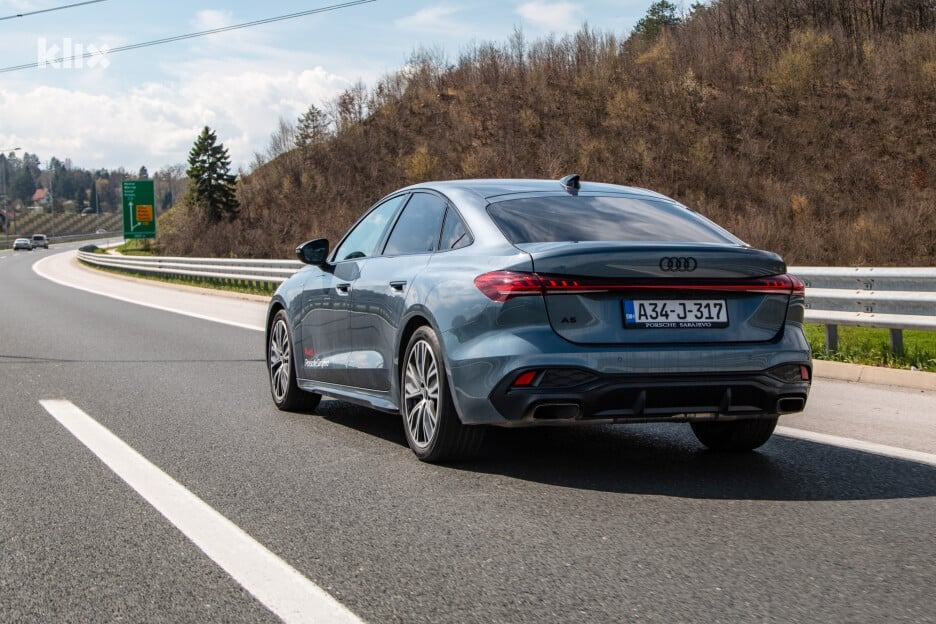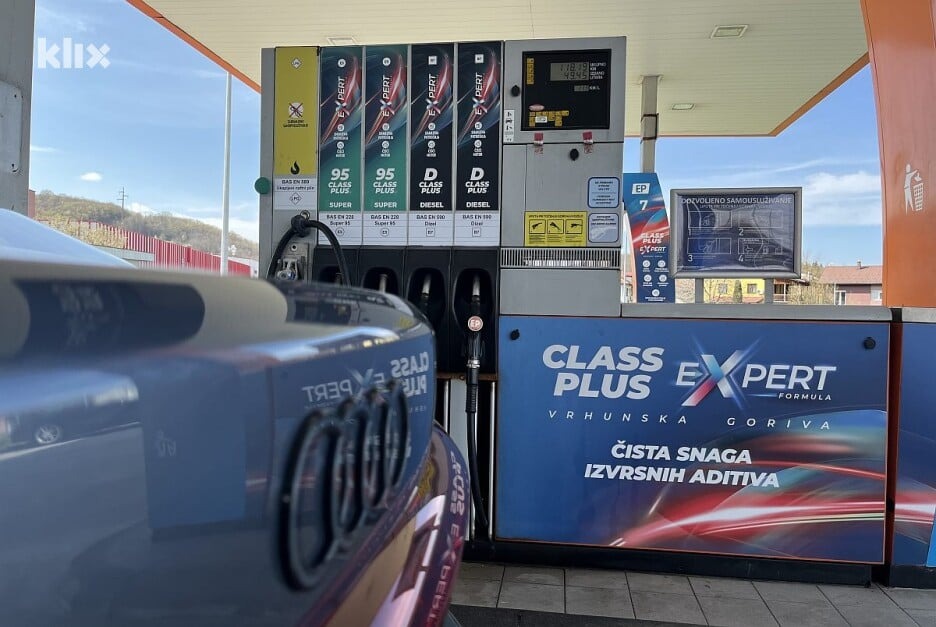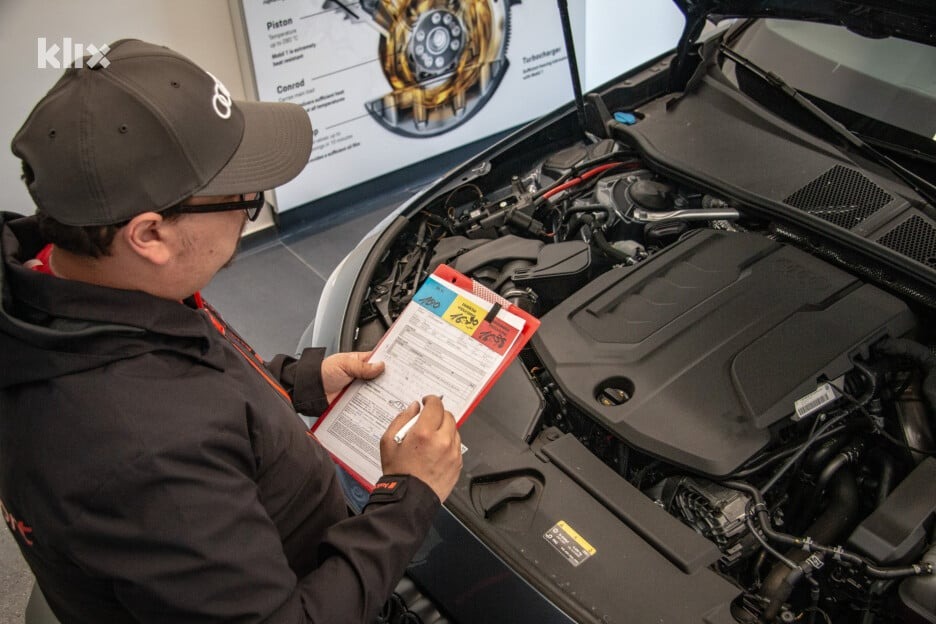We did not break the Guinness record, nor did we try to make the new A5 with a gasoline engine the king of economy with the help of tricks. We were looking for the efficient side of this athletically built premium newcomer, which, with a little attention, paid off with diesel-level consumption.
Along the way, we checked how much it costs to maintain it up to 100,000 kilometers.
Although 10 years ago such a test would have been more appropriate for diesel, today the picture on the market is different. Gasoline cars are becoming more and more dominant and there is no turning back.
They are much more efficient than before, they are no longer so wasteful that they would necessarily choose diesels as in the past when the difference in consumption was really huge, and the price plays an increasingly important role.
For this test, we chose Audi’s latest A5 model. We put to the test the version with the third (edition Sport) of a total of four equipment packages and the basic petrol without any “supplements”. In Audi showrooms, you will find a copy like this at a price below 90,000 KM. If we could choose for this test, we would not choose the S-Line equipment package on 19-inch wheels either, but the visual impression is much better, regardless of the fact that a greater challenge awaited us.
Should we raise or lower our guard against the striking Audi A5 powered by a 2.0-liter turbocharged 150-horsepower engine that drives the front wheels and weighs a hefty 1,695 kg. So we have a weight-to-power ratio of 11.3 kg/1 hp. We decided to check!
We reserved the first day to pick up the vehicle, familiarize ourselves with the technical equipment and visit the gas station. We filled the 56-liter tank to the top – as standard, until the first click of the gun, and the trip computer showed an autonomy of 740 kilometers. There was no need for evil, but we filled a five-liter canister to have for first aid. Although the tanks of these limousines used to have a much larger capacity (first generation A5 – 65 liters), and the cars were much lighter – on average 150 kg less, we are still itching and impatient to get going.
We open the massive doors, it seems that this time Audi wanted you to get the impression that you are entering Fort Knox. We sit in the profiled seats from the S-Line line and enjoy them from the start. You sit quite low as if your buttocks are touching the floor or is that just a subjective impression after countless SUVs. Press a button and we wake up to a slightly evolved, but extremely robust 2.0-liter TFSI from some old days that does not have the slightest help from electricity and for which you would put your hand in the fire and bet it will cover half a million kilometers without coughing.
Driving without tricks
We didn’t inflate the tires additionally, we didn’t retract the rear-view mirrors, we didn’t turn off the air conditioning or other secondary consumers. We thought of realizing a mini test of efficiency by sticking to the usual speed limit with a slight tolerance of 10 percent with which we are satisfied that the postman will not hand us a blue envelope.
With every kilometer you drive, you feel the weight of 1.7 tons, but in a positive way. You feel like you’re driving an armored car, with nothing to do except for the gentle rolling of the Bridgestone tires mounted on the 19-inch rims. Audi has really weighted the new A5, as if it were designed for military, not civilian, purposes.
The rain followed us for more than half of the route. We were accompanied by practically autumn weather, but on the first day we “tear off” around 200 kilometers. The autonomy rose to 760 kilometers at one point and fell to 690 kilometers at the end of the first day. We record the final average of 5.6 liters, although we drove the first section, dividing the first 100 kilometers between the city and the highway, where we were surprised by the phenomenal consumption of 6.4 liters at 130 km/h.

If you were to tell someone that a 1.7-ton Audi consumes this little on the highway, they would probably think you were telling a joke, but here is proof that a mid-range premium sedan can be an efficient kilometre guzzler without sacrificing speed or fuel consumption.
Herzegovina – California
The second day we eagerly set off on our first long route. Early morning, the display shows seven degrees Celsius. What can Audi’s turbo petrol engine do that has undergone evolution since the A4 was discontinued? The new A5, as the successor to the A4, drives sweetly with this petrol engine, we would like to press the gas to the floor and rev it up, because that suits it, but we stick to the planned plan. We don’t forget to press the fourth available driving mode “Efficiency” and the direction Široki Brijeg. The forecast said that the sun would be “down” that day, and we wanted to leave the rain behind us.
We stick to the old road and the speed limit with that 10 percent tolerance and slowly gain kilometers. The topography in the direction to the south is in our hands, because we made the descent down “Ivan”, then down Bradina and we are already catching the dawn in Konjica. Unhindered, we rush into the embrace of the sun.
The forecast was not wrong, a beautiful 15 degrees already at 8 o’clock in the morning. An average of 5.1 liters with an average speed of 52 km/h. A short break and we are already on our way to the starting station. Work on the road, rain again, climbs and bends slightly raise our average to 5.3 liters, with which we complete the route of around 310 kilometers. We are halfway to expectations. We traveled a total of 510 kilometers, and the trip computer shows us a remaining range of 520 kilometers. We already have a thousand in our head as the ultimate goal.
Bridge on the Drina
A new day, new rain and driving with the wipers on again. We briefly exit the highway from the direction of Sarajevo, and head towards Busovača. Crowds, a column of slow-moving vehicles, we constantly accelerate and brake. We are nervous, the Audi’s seven-speed S-Tronic only manages to shift into fifth gear from Kaćun. Not even the Apaurian audio book “The Bridge on the Drina” calms us down. It seems that the day has started in the wrong direction and we can’t seem to stabilize the speed at which we have been casually keeping our fuel consumption closer to five liters in the previous days.
We finally reach the section towards Zenica, instead of the “Drina” we drive along the Bosna and here our A5 finally lowers its consumption below 5.5 liters. We continue towards Žepče and Maglaj at a faster pace. The old highway towards Doboj is still overloaded with trucks, and the new section of the highway near Nemila leaves a bitter impression due to the slow construction of the highway called endless longing.
Audi’s gasoline engine purred nicely while we were driving towards Maglaj, with bursts of shifting mostly between the third and sixth gears. As is usual for the M17 highway, before Maglaj we found ourselves in a hill again. After five minutes of “crawling” in the lap, we decide to return. We pick up the pace and return along the entire section of the A1 highway from Zenica to Sarajevo. At the end of the route, we record another 300 kilometers on our account and an excellent average of 5.4 liters. With a total of 810 kilometers traveled and a remaining autonomy of 250 kilometers, it is already easier to breathe. Butterflies wake up in the stomach, while a gentle smile gives hope that we will achieve our goal, to empty the tank with a four-digit mileage.

Gasoline, but consumes like a diesel
On the fourth day, we were already tired, but the brain works at 120 per hour and calculates how to efficiently drain the last quarter of the tank. The road leads us to Kladnje, where we arrive relatively quickly and turn back towards Sarajevo. Finally a beautiful and sunny day in one piece. Who would have thought that cold weather and sleet would arrive the very next day. However, we step back and continue along the old road to Konjic.
Autonomy is already falling at a faster rate than with the first half of the tank and we are already slightly panicking and wondering where we will stop and use the fuel from the canister. We do not take our foot off the gas, even though we are slightly above the speed limit, because we want to remain as consistent as possible with our daily usage regime. We experience the peak after Konjic when the trip computer ticks off exactly 1,000 kilometers traveled with the remaining 10 kilometers of autonomy.
We continue on, but already after another 800 meters “zero” appeared. We don’t want to take any chances with the fuel pump, the alarm goes off and we use the gold joker or rather the black canister from the trunk. We pour five liters and turn towards Sarajevo. We stop at the first gas station at the western entrance to the city and pour 49.45 liters before the first click of the gun. After drawing the line, we calculated that with “zero” we were left with only 1.5 liters of fuel in the tank. Enough even for FIA analysis after an F1 race and avoiding disqualification, but they still wouldn’t recommend driving on reserve, let alone on gasoline vapor and fuel residue.

After almost 18 hours spent in the new A5
With the average outside temperature of 12 degrees Celsius and the rain that “washed” us for most of the route, we draw the line. We subtract the difference and arrive at the result that we finished the mini hard test with an average speed of 52 km/h and consumed an average of 5.35 liters per 100 kilometers. The lowest consumption we recorded was 4.1 liters.
Surprise or not, but this is not a diesel, but a proven turbo-petrol that has been improving at Audi for 20 years. The gasoline engine did not say the last word and shows once again that it is no longer in the shadow of the diesel, nor is it afraid of any plug-in hybrid.
The efficiency of the new A5 comes from the fluidly designed body with improved aerodynamics and a much lower center of gravity, which we have distanced ourselves from in recent years due to the change in preferences towards SUVs, but also from the optimized 150 horsepower, whose 280 Nm of torque is efficiently distributed in the range of 1,400 to 3,600 revolutions per minute. This A5 accelerates to 100 km/h in 9.8 seconds and pushes the digital projection of the speedometer to almost 220 km/h.
So, the difference between petrol and diesel is getting smaller. Gasolines are not that wasteful, nor are diesels necessarily a symbol of former economy. The essence is constant speed without too frequent acceleration and braking. Such a driving rhythm will need to be developed in the near future, and this is something that electrified cars are forcing us to do, as well as the increasing number of cameras on our roads. Safety should be everyone’s first priority, and the effect of getting to the final destination 15 minutes faster should not be a motive.

How much does it cost to maintain a gasoline A5 up to 100,000 kilometers?
After we proved that it is possible to travel a thousand kilometers with one tank of gasoline at a cost of approximately 130 KM, we asked ourselves how much regular maintenance of the new A5 with basic gasoline costs. So, we roughly know the cost of fuel, and it is also known that service intervals are scheduled at 15,000 kilometers or once a year.
If you’re wondering whether Audi, as a premium product, is an exception to the rule when it comes to servicing, we can confirm that it is not. In the table you can see the maintenance plan up to 100,000 kilometers according to the scheduled servicing plan.
The most affordable services are at 15,000, 45,000 and 75,000 kilometers, since only the oil and oil filter are changed. This mini manual procedure costs 357 KM. The most expensive regular service is the one at 90,000 kilometers, where, in addition to changing all filters and oil, the oil in the brake system is changed, as well as the oil in the automatic transmission. Such a service costs 1,346 KM.
It should be taken into account that these are current prices and that they may vary from service to service, i.e. exclusively from the prices of the working hour, as well as from the action on vehicles older than four years.
No major service is scheduled for this engine, but a visual check of the timing belt is only done at 150,000 kilometers. Another proof that the pleasure of driving and owning does not create a bitter taste when maintaining a German premium brand.